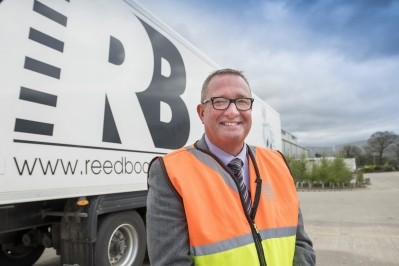Seeing is believing

Increased visibility is a modern mantra, with its promise of a cure for virtually any of the supply chain ills that afflict today’s food firms.
What exactly it means and the scope of the benefits on offer in each project can vary widely, so carefully scoping out the underlying goals and likely impacts is an important first step before deciding on the best tools to use.
“It’s easy to think of supply chain visibility software as the starting point to delivering true supply chain visibility. In reality, however, it is the last step in the process,” says Peter Surtees, director of supply chain consultancy Miebach.
“That is because, prior to selection of a supply chain visibility tool, each business needs to consider several fundamental questions to ensure the software they choose is right for them.”
Surtees’ key questions are: how is the business going to use its improved visibility to improve its supply chain? What degree of supply chain maturity does the project aim to achieve? Which functions will the visibility project include? Will it be a ‘big bang’ or step-by-step integration? What is the business case?
And what decision-enabling metrics and key performance indicators do you need? In turn, the answers depend on three things – the nature, impact and testing of the supply chain.
“To fully understand functional requirements, construct a theoretical model of your logistics processes and the end-to-end supply chain,” says Surtees. “With that base established, it is essential to understand the impact that visibility will have on your business.
“What will change in the organisation, processes and computer systems and what effect will these changes have? If the impact is not significant and far-reaching, I would question how the business intends to use visibility or even if it needs it.”
Testing out proposals (Back to top)
He then advises testing out proposals in a pilot programme: “With these steps in place, your organisation will be ready not only to implement its supply chain visibility software, but to know that its capabilities match your requirements.”
The ever-present threat of food recalls is among the most obvious drivers for improved supply chain visibility. Effective traceability enables an agile response to emerging problems and minimises any impact by highlighting precisely which products and/or batches are affected.
“In the UK, the number of food recalls by the Food Standards Agency in 2015 grew by 78% compared with the previous year. In Germany, from 2015 to 2016, the number of food recalls increased by 50%,” says Timo Schaffrath, marketing and PR manager for enterprise resource planning specialist CSB-System.
“Such figures demonstrate the importance of having an effective traceability system. If there is a threat of a recall, companies must know exactly to whom they have delivered which product. This requires a comprehensive IT system that can track a product and its component parts, from receipt of raw materials through stock, production, packaging and picking, to onward supply.”
“The process can be complicated, especially when different raw material batches are mixed in food production,” Schaffrath says. “It requires the creation of individual lot numbers that have to be administered and passed on throughout the production and packing process.
“IT data capture points at all relevant parts of the operation are then able to capture and process the information, ensuring that data is collected directly during the process so that companies have full knowledge of which batch and which ingredients were put into each finished food product.”
Schaffrath adds that systems deployed primarily to improve traceability will often deliver knock-on benefits in terms of stock control, recipe optimisation and consistency.
Sustainable sourcing (Back to top)
Visibility can help boost business in less tangible ways too, according to Mike Edmunds, md of supplier relationship management specialist Trade Interchange.
He highlights the increasing number of companies looking to connect with consumers who want to feel good about their food choices and says they can use supply chain visibility to highlight their credentials in areas such as sustainable sourcing, ethical labour practices and similar ‘feel-good’ measures.
“Many people are conscious and aware that big brands can make a big difference, whether that’s on ethical trading or environmental performance. It depends where your market is and who your consumer is how important it is to particular brands, but the retailers and the restaurants are driving this too,” says Edmunds.
“Our systems can help them look at their suppliers in terms of certification, CSR [corporate social responsibility] policies and terms. We can help them ensure they’ve got compliance from the supplier at three levels – as an entity, at a site level and at the level of the product or service they’re providing.
“Then, the technical and legal experts in CSR are able to look at that and make sure that the supplier is fitting the mould and complying with our client’s standards.”
Using a web portal to quiz suppliers obviously makes involvement easier, but Edmunds stresses that it’s much more than a tick-box exercise.
“By the selections they make, suppliers will be offered relevant questions,” he says. “If they’ve got certain accreditations it might be very straightforward, but if they haven’t they may be asked to explain what they’re doing in a certain area.
“This approach helps companies build relationships and drive improvements among their suppliers. It not just a case of ‘if you haven’t got a certain accreditation you can’t come in’. It can help drive improvements in smaller suppliers.”
Meanwhile, supplier of systems to the food chain, Muddy Boots Software, says its new Insights data analytics package takes visibility even further by enabling users to see into the future.
Business intelligence and analytics manager Mark Powell says it’s been rolling out insights to customers of its Greenlight quality control software since November: “Our customers have benefitted from the speed at which they can now access and analyse their data, its ease of use and the granular detail of being able to visualise problems relating to seasonality, location, poor performing suppliers.”
Depending on the project, Insights can draw data from within the underlying quality control platform alone or it can blend that with data from other systems, such as customer complaints or weather data.
“We can look at weather data during the growing cycle and spot when weather will have an impact on quality and shelf-life. We might find a direct correlation between high rainfall during the growing cycle and a dip in quality two months later. If you can make predictions you can make contingency plans. You can negotiate on quality and price or you can look to source products elsewhere,” he says.
In addition to weather, temperature data throughout the cold chain is a great predictor of quality in vulnerable produce, adds Powell: “If the temperature strays outside of the five to 8°C range at any point, products like berries may look fine on delivery but they might deteriorate very quickly.”
Quality and shelf-life (Back to top)
As data analysis develops, Powell predicts that the ability to foresee how products will perform in terms of quality and shelf-life will continue to grow: “We’re scratching the surface of what we can deliver and primarily looking at our own data for now.
“We’re looking at when other sources might add value and when you start to stitch data together it starts to provide a real predictive quality.”
Data compatibility can be a significant and expensive obstacle to seamless supply chain cooperation and another new development is designed to streamline the transfer of product data between food companies and retailers by creating a universal format for data and images, which are uploaded to a central catalogue that can be accessed by multiple retailers.
Major food and retail companies have worked together to develop the new service, which is being managed by GS1 UK.
“We estimate that it costs £200M a year for manufacturers to provide data to each UK retailer in a different format,” says Jim Dickson, head of retail with GS1 UK. “A retailer might ask for monthly samples so they can weigh and measure them, for example, and everybody is touching the product in order to move data across.”
“The new catalogue is a single source so it’s a great leap forward. Suppliers send in one sample so we can verify that the physical data is accurate and the supplier loads all the other information into the catalogue using a standard data model.”
The productDNA:hub system is going live this spring and most major grocery retailers in the UK are expected to sign up by the summer.



















